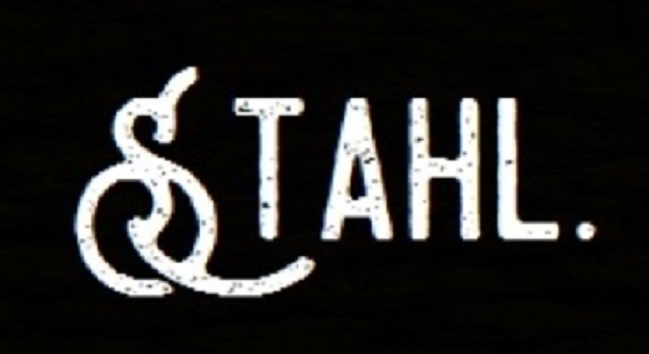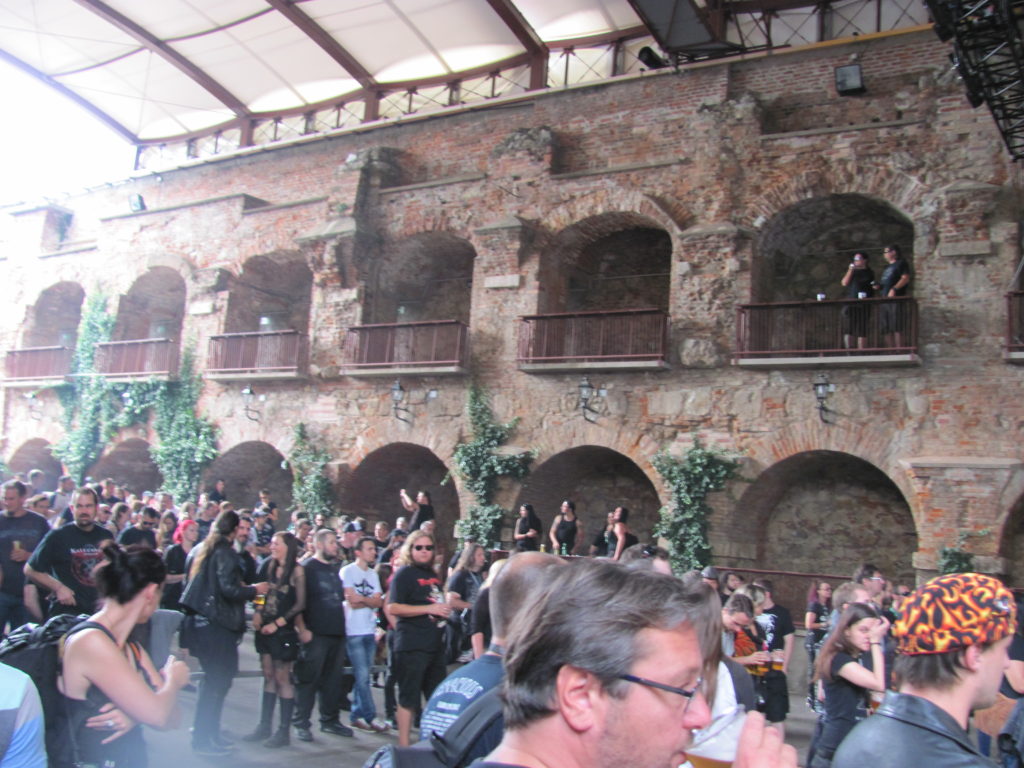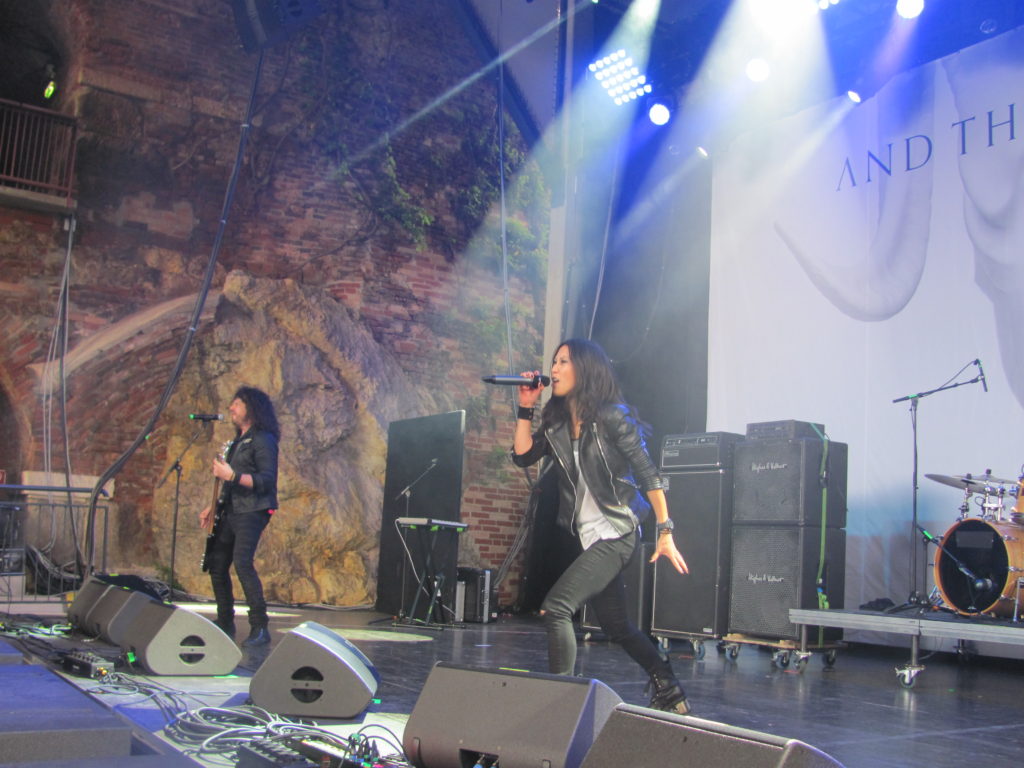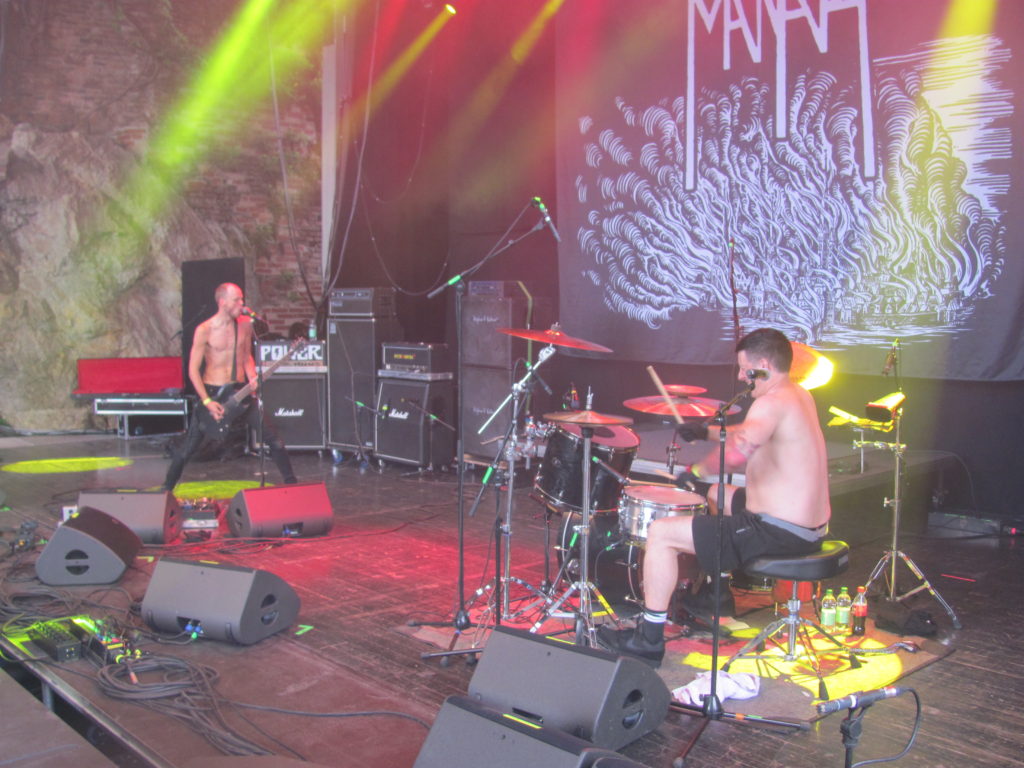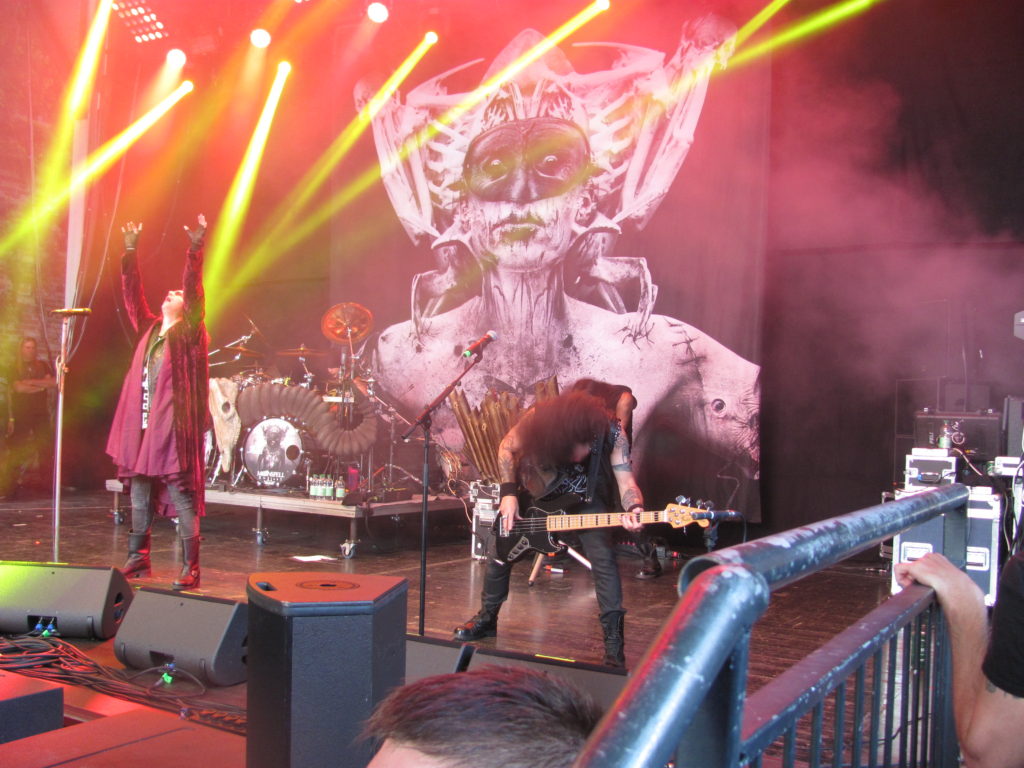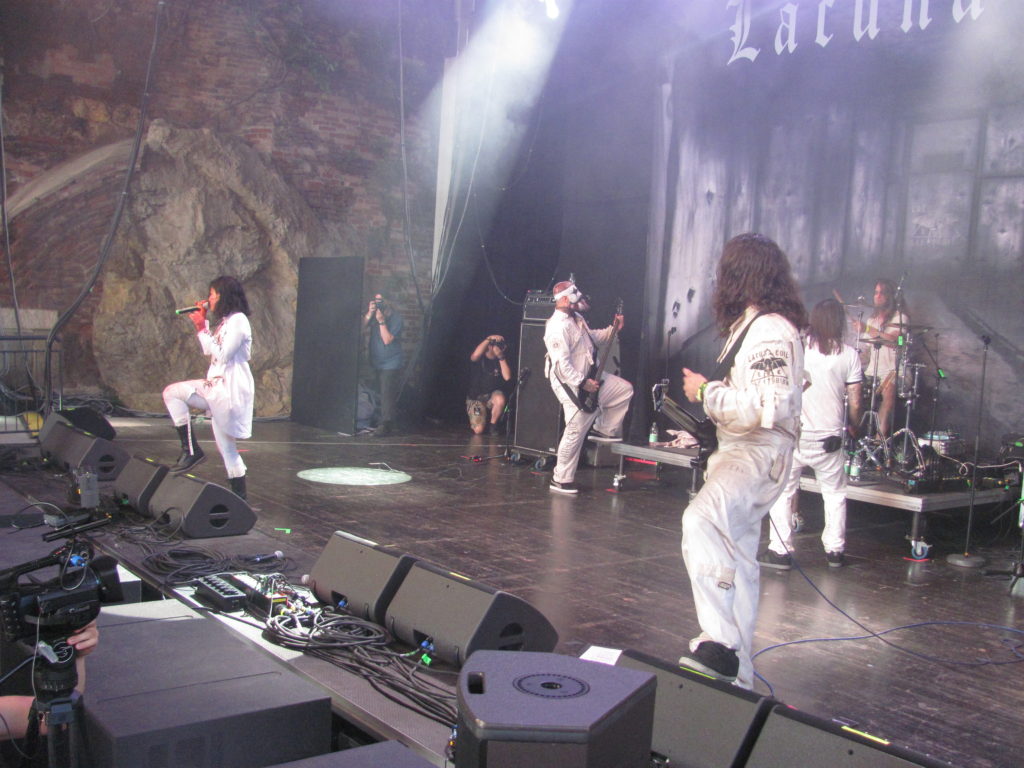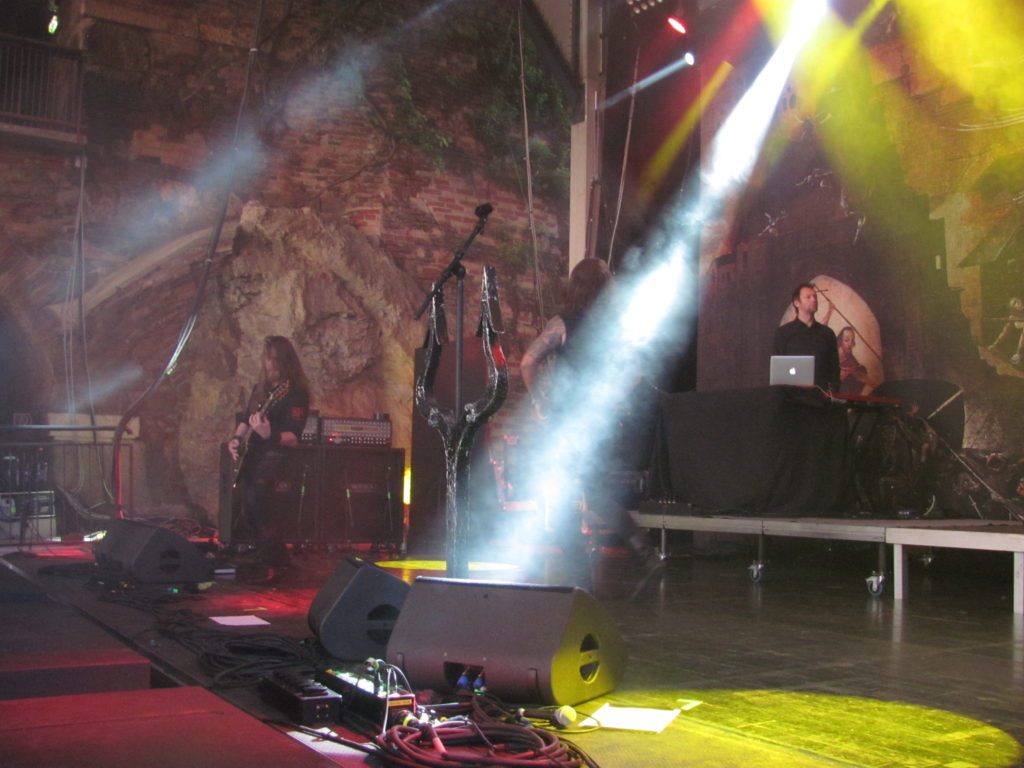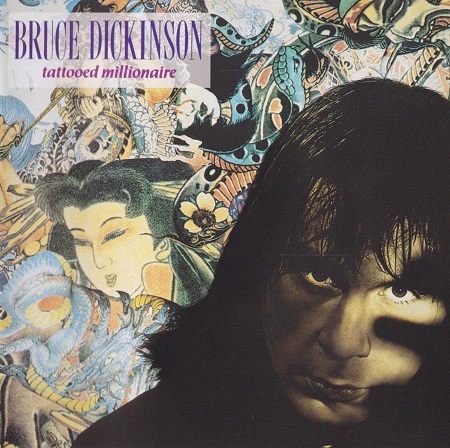The context
One week ago, on 13. August 2016, being a Metal music fan, I attended the ‘Metal On The Hill 2016’1 festival, a festival of Extreme Metal, organized by a Styrian Heavy Metal label, which took place on the ‘Schlossberg’ and its ‘Kasemattenbühne’ in the city centre of Graz. The location is an old vault with brick walls, which used to be the storage of the town’s castle since Renaissance days.2 It was re-functioned as a ‘Freilichtbühne’, an open-air arena under historical auspices, in recent time. There, at the historical centre of the regional area of Styria, for the first time, an Extreme Metal festival took place.
This is not only another indication that Metal reaches the cultural mainstream but it means that, spatially and metaphorically, the performance of Extreme Metal music reached the heart of an old – historical – Austrian and European city. Graz, being the second largest urban area of Austria, having about 250.000 inhabitants,3 is, thus, a kind of a cultural ‘avantgardian’ of Austria and Europe: it integrates Extreme Metal into its cultural narrative. For sure, that Napalm Records,4 the label which organized the festival, originates from Eisenerz, Styria, favoured this process.
What I want to reflect on in this article, is the imagination and experience of a cultural historian, at the same time a Metal music fan, attending this festival. I want to employ the theory of ‘thick description’, developed by anthropologist Clifford Geertz in the 1970s,5 on this imagination and experience. I want to do a thick description of a cultural historian’s imagination in Extreme Metal music, at a certain place, at a certain time of contemporary history.
Coming to the arena: a conservative experience
On the day of the festival, 13. August 2016, I arrived at the Kasemattenbühne at about 2 p.m. There was already a rather big crowd. My first impression was that it was going to be well received and well attended. The location was situated beneath a modern roof, but, actually, it was a place of history, of ‘old Graz’ which I grew up in:
Like this, coming to the arena of Kasemattenbühne, I felt to be a part of Graz’ and Styria’s history and the imagined community of Metal music, at once . This is a rather peculiar and new, almost innovative finding of research: so far, Metal music and its cultural discourse has claimed to be emancipative; a transformative force of culture.7 Being at the Metal On The Hill festival, for me, was a conservative experience: it was an experience of Heavy Metal music happening within the ‘old’ framedwork of my regional belonging and history. It was a conservative experience – but still there was the imaginary and culture of rebellion, anarchy and ‘being against the establishment’ that forms the cultural core narrative of Metal music.
Experiencing conservative anarchism
The billing of the festival featured many long-standing successful bands and ‘newcomers’ in Extreme Metal: Moonspell, Mantar, Satyricon and Arch Enemy were some of the main acts.8 Too, there were some bands which one could call Alternative Metal or Rock: And Then She Came from Germany and Italian group Lacuna Coil were this side of the festival. The festival lasted from about 2 p.m. to 10:30 pm. Hence, it was about eight hours of dense music and images of Metal culture, most of all Extreme Metal discourse:
Taking a look at these pictures, makes very clear that the festival, as experienced by myself as a ‘metalhead’ and cultural historian at once, but by many other people in the ‘crowd’, too, was a a classical Heavy Metal experience; in terms of sound, sphere and imaginary. It was loud, it was crowded, and it was full of symbolism of riot, of revolution, of satanism and anti-christianism (Satyricon), as well as mysticism (Moonspell). It was a mixture of brutality and mythology.
That was the feeling of the metalhead in me. But, the cultural historian in my head acknowleged something else. At Metal On The Hill 2016 festival, Extreme Metal (noise, brutality, satanism, mysticism, crowdedness, Extreme Metal identity) took place within the space of common Styrian history. Its discourse progressed to the heart of Styrian regional and local history, spatially embodied by the Kasemattenbühne on the Schlossberg, in the city centre of Graz. So, for me as a cultural historian, I imagine the festival to be a discourse of conservative anarchism.
A thick description of conservative anarchism
So, looking back at my personal and professional experience at this festival, it is a form of memorial and cultural imagination of the past which can be called a ‘thick description’ of conservative anarchism. We have to be aware of the very fact, also in the case of this festival, that Heavy Metal is marching into cultural mainstream. This process changes its identity and discourse. It makes its discourse become attached to conservatism but at the same time Heavy Metal and Extreme Metal stick to their imaginary of anarchism and other ‘blackisms’. Thus, when trying to give a cultural-historical description of the 2016 Graz Metal On The Hill festival as a cultural event, it has to be seen as a play of conservative anarchism. It was an event where old and new, regional history and Heavy Metal culture met: what we do have to expect from that rendez-vous, I do not know. But, it is very likely that it will change both – conservatism and Metal culture.
Cf. http://www.metal-on-the-hill.com/, retrieved 20.08.2016. ↩
Cf. www.graz.at., retrieved 20.08.2016. ↩
Cf. ibid. ↩
Cf. https://shop.napalmrecords.com/, retrieved 20.08.2016. ↩
Cf. Clifford Geertz: Thick Description: Toward an Interpretive Theory of Culture”. In The Interpretation of Cultures: Selected Essays. New York 1973, 3-30. ↩
The Kasemattenbühne; photo: Peter Pichler. ↩
Cf. Jeremy Wallach e.a. (eds.): Metal Rules the Globe. Heavy Metal Music around the World. Durham & London 2012. ↩
Cf. ibid. ↩
And Then She Came; photo: Peter Pichler. ↩
Mantar; photo: Peter Pichler. ↩
Moonspell; photo: Peter Pichler. ↩
Lacuna Coil; photo: Peter Pichler. ↩
Satyricon; photo: Peter Pichler. ↩
